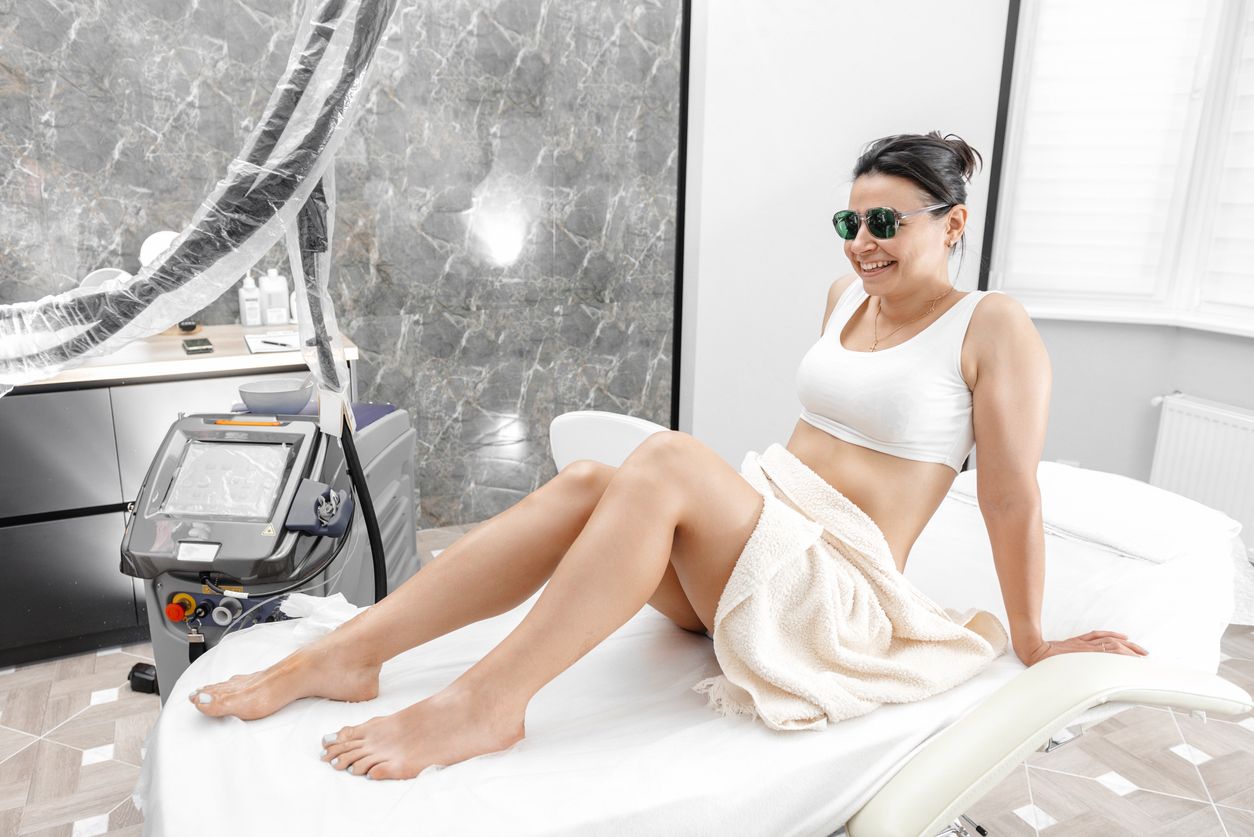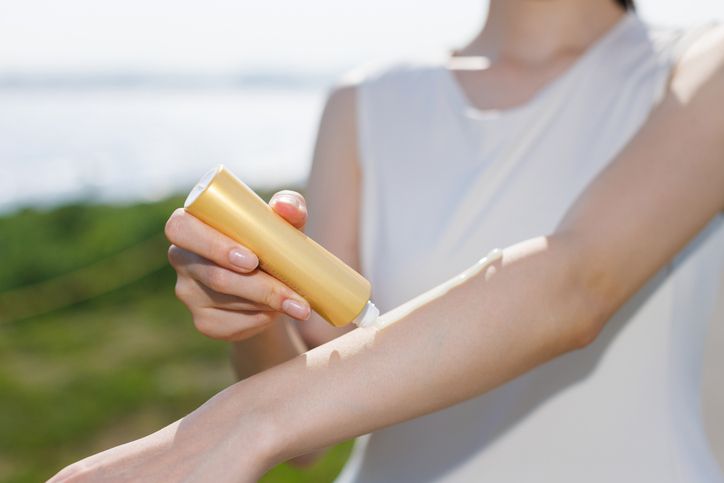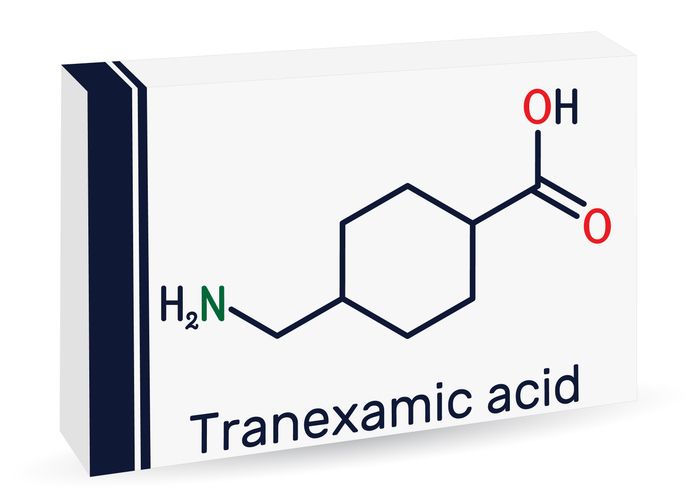- Home
- Trend
- Weight Loss Strategies
- Acne Tips
- Hair Health Information
- Blemish Removal Tips
- Acne Scar Removal Tips
- Muscle Building Techniques
- Intimate Care Tips
- Postpartum Intimate Care
- Eye Bags Wiki
- Tips for Face Slimming
- Secret of Permanent Hair Removal
- Breast Enlargement Tips
- Cure to Snoring
- Marionette Lines
- Skin-Tightening Secrets
In a fast-paced world where convenience often trumps everything else, hair removal creams have become a go-to solution for many looking to eliminate unwanted body hair quickly and painlessly. These creams, also known as depilatory creams, promise smooth skin without the hassle of shaving, waxing, or more invasive procedures. The idea of simply applying a cream, waiting a few minutes, and wiping away hair sounds almost too good to be true. But as the old saying goes, if something seems too good to be true, it often is.
The Chemical Work of Hair Removal Cream

Hair removal creams work by breaking down the protein structure of the hair, known as keratin. This process is fast and effective, leaving the skin hair-free in a matter of minutes. The active ingredients in these creams often include:
• Thioglycolic acid: This is a common ingredient in hair removal creams. It works by breaking down the keratin in hair, but it can also irritate the skin.
• Calcium hydroxide: This is another common ingredient in hair removal creams. It helps to soften the hair, but it can also be irritating to the skin.
• Potassium hydroxide: This is a strong base that can be used to remove hair. However, it can also be very irritating to the skin.
• Stannous sulphide: This is a less common ingredient in hair removal creams. It is a strong reducing agent that can break down the keratin in hair. However, it can also be irritating to the skin.
However, the same chemicals, such as thioglycolic acid and calcium hydroxide, can attack the hair shaft, weakening it to the point where it can be easily wiped away. Our skin, like hair, is made up of keratinized cells, and exposure to these harsh chemicals can lead to a range of side effects. While the convenience of hair removal creams is undeniable, their use can be a double-edged sword, particularly for those with sensitive skin or underlying skin conditions.
Hair removal creams may offer a quick fix, but they come with a hidden cost. The side effects of hair removal cream use can range from mild skin irritation to more severe reactions, including chemical burns and long-term skin damage.
6 Side Effects of Hair Removal Creams
The side effects of hair removal creams can vary depending on several factors, including skin type, the specific product used, and how closely the instructions are followed. Some of the most common side effects include:
1. Skin Irritation and Redness
Skin irritation is a common side effect of hair removal creams. The active chemicals in these creams can cause the skin to become red, itchy, and inflamed, especially in sensitive areas like the bikini line or underarms.
The severity of irritation can vary, with some individuals experiencing only mild discomfort while others may suffer from more pronounced inflammation and sensitivity. This irritation often occurs due to the harsh nature of the chemicals designed to break down hair proteins.
2. Chemical Burns
Chemical burns are a more severe reaction that can occur if the hair removal cream is left on the skin for longer than recommended or applied to broken or irritated skin.
These burns can cause intense pain, blistering, and, in extreme cases, permanent scarring. It's essential to follow the product's instructions carefully and avoid using the cream on areas with existing skin issues to minimise the risk of chemical burns.
3. Allergic Reactions
Allergic reactions to hair removal creams can manifest as swelling, hives, or even difficulty breathing in severe cases. Ingredients in the cream can trigger allergic responses in some individuals, making it crucial to conduct a patch test before full application.
4. Skin Discoloration
Prolonged or repeated use of hair removal creams can lead to skin discoloration, particularly in those with darker skin tones. The chemicals in the cream can cause hyperpigmentation, resulting in dark patches or uneven skin tone.
These discolorations can be challenging to treat and may require specialised skin care products or professional treatments to correct.
5. Long-Term Skin Damage
Regular use of hair removal creams can weaken the skin’s natural barrier, leading to increased dryness, sensitivity, and a higher susceptibility to conditions like eczema or dermatitis.
Over time, the cumulative effect of the chemicals can accelerate skin ageing, causing premature wrinkles and a loss of elasticity. Maintaining a proper skincare routine and using moisturising products can help mitigate some of these long-term effects.
6. Ingrown Hairs
Hair removal creams only dissolve the hair above the skin's surface and do not address the hair follicle itself. As a result, new hair growth can sometimes become trapped beneath the skin, leading to painful ingrown hairs.
Ingrown hairs can cause discomfort, inflammation, and even infection. To prevent this, exfoliating the skin regularly and using creams designed to prevent ingrown hairs may be beneficial.
免費體驗
S6 Body Sculpting Treatment
1 Minute Self-Registration
Date should not be before minimal date
The Importance of Patch Testing: A Crucial Step Often Overlooked

Given the potential side effects of hair removal creams, it is essential to do a patch test before using any new product. A patch test involves applying a small amount of the cream to a discrete area of the skin and waiting 24-48 hours to observe any adverse reactions. This simple step can help prevent serious skin reactions and ensure that the product is safe for use on larger areas of the body.
How to Perform a Patch Test
1. Choose a Discreet Area
Select a small, inconspicuous area of your skin for the patch test. Ideal locations include the inside of your elbow or behind your ear.
These areas are chosen because they have a similar sensitivity to the regions where you plan to use the hair removal cream, such as your legs or bikini line. The skin in these areas is typically sensitive enough to provide an accurate indication of how your skin will react to the product.
2. Follow the Instructions
Carefully read and follow the product's instructions regarding application time. Apply a small amount of the hair removal cream to the chosen area and leave it on for the time specified in the directions.
Avoid leaving the cream on for longer than recommended, as this can significantly increase the risk of skin irritation or chemical burns. Adhering to the recommended time ensures that you get a true indication of the product's effects on your skin.
3. Rinse and Wait
After the specified time has passed, rinse the area thoroughly with warm water to remove the cream. Make sure all traces of the product are washed away, and gently pat the skin dry with a clean towel.
Following this, allow the skin to remain undisturbed for 24 to 48 hours. During this waiting period, monitor the area for any signs of redness, itching, swelling, or other adverse reactions.
4. Evaluate the Results
After the waiting period, inspect the test area for any signs of irritation or allergic reaction. If the skin remains clear and shows no signs of redness or discomfort, it is generally safe to use the hair removal cream on larger areas of your body.
However, if you notice any adverse reactions, such as redness, itching, or swelling, it indicates that the product may not be suitable for you. In such cases, it is best to avoid using the cream on other areas and consider opting for an alternative hair removal method.
Despite the importance of performing a patch test, it is a step that many people skip, often due to convenience or a lack of awareness. Neglecting this crucial precaution can lead to serious skin issues, particularly for individuals with sensitive skin or a history of allergic reactions. By taking the time to conduct a patch test, you can ensure that your hair removal routine is both safe and effective.
A3 Hair Removal Treatment: A Safer, Long-Term Alternative
While hair removal creams offer a quick and temporary solution, their side effects and potential for long-term skin damage make them a less-than-ideal option for many. For those seeking a safer, more permanent hair removal method, the A3 Hair Removal Treatment stands out as a superior alternative.
The A3 Hair Removal Treatment uses advanced laser technology to target and destroy hair follicles, resulting in long-term hair reduction. Unlike hair removal creams, which only remove the surface hair, laser treatments penetrate the skin to target the root of the hair, providing a more permanent solution.
Why A3 Hair Removal Treatment is a Better Option?
Long-Term Results
One of the most significant advantages of the A3 Hair Removal Treatment is its ability to provide long-term results. While hair removal creams only offer temporary relief, laser treatment can lead to a permanent reduction in hair growth after a series of sessions. This means fewer treatments over time and a significant decrease in the need for regular hair removal.
Safety and Precision
The A3 Hair Removal Treatment is designed with safety in mind. The laser technology used in this treatment is highly precise, targeting the hair follicles without damaging the surrounding skin. This reduces the risk of side effects such as skin irritation, burns, or discoloration, making it a safer option for all skin types.
Versatility
The A3 Hair Removal Treatment is versatile and can be used on various parts of the body, including sensitive areas such as the face, bikini line, and underarms. This flexibility makes it an ideal choice for individuals seeking comprehensive hair removal solutions.
Minimal Discomfort
While hair removal creams can cause discomfort due to chemical irritation, the A3 Hair Removal Treatment is designed to be as comfortable as possible. The treatment is often described as a mild tingling sensation, with most patients experiencing little to no pain.
No Risk of Chemical Burns or Allergic Reactions
Since the A3 Hair Removal Treatment does not involve the use of chemicals, there is no risk of chemical burns, allergic reactions, or other side effects commonly associated with hair removal creams. This makes it a safer option for individuals with sensitive skin or allergies.
Improvement in Skin Quality
In addition to removing unwanted hair, the A3 Hair Removal Treatment can also improve the overall quality of the skin. The laser stimulates collagen production, leading to smoother, firmer skin with fewer blemishes or imperfections.
The Psychological Impact of Hair Removal: Choosing What’s Right for You
Hair removal is not just a physical process; it also has significant psychological implications. The desire for smooth, hair-free skin is often driven by societal beauty standards, personal preferences, and the need to feel confident in one’s appearance. However, the choice of hair removal method can impact more than just your skin – it can also affect your mental and emotional well-being.
For many, the convenience of hair removal creams is appealing, especially for those with busy lifestyles. However, the potential side effects and the need for frequent reapplication can lead to frustration, dissatisfaction, and even anxiety about skin health. On the other hand, opting for a more permanent solution like the A3 Hair Removal Treatment can alleviate these concerns, providing a sense of control and confidence in one’s appearance.
As you consider your hair removal options, remember that your choice is an important part of your self-care routine. Whether you opt for the convenience of hair removal creams or the long-term benefits of the A3 Hair Removal Treatment, make sure your decision is informed, thoughtful, and aligned with your personal values and goals. Your skin deserves the best, and with the right approach, you can achieve the beautiful, healthy skin you’ve always wanted!
A3 Laser Hair Removal Treatment免費體驗
S6 Body Sculpting Treatment
1 Minute Self-Registration
Date should not be before minimal date
FAQ

1. What are the potential side effects of using a depilatory cream for the first time?
If you are using a depilatory cream for the first time, you might experience several side effects. These can include skin irritation, redness, and a burning sensation. Depilatory creams work by dissolving the hair just below the skin’s surface, which can sometimes irritate the skin, especially if you have sensitive skin or leave the cream on for longer than recommended.
2. How do depilatory creams affect sensitive skin areas?
Depilatory creams are a popular choice for hair removal, but if you have sensitive skin, they might cause irritation or an allergic reaction. Sensitive areas, such as the bikini line or underarms, are more prone to redness and discomfort. It’s important to perform a patch test before using the cream on these areas to minimise the risk of adverse effects.
3. What should you do if you experience a reaction from using hair removal cream?
If you have a reaction from using hair removal cream, such as redness, swelling, or itching, it’s essential to stop using the product immediately. Rinse the affected area with lukewarm water and avoid applying any other skincare products until the irritation subsides. If symptoms persist, consult a healthcare professional.
4. Are there specific warnings for using a depilatory cream on the face?
One of the common warnings for using a depilatory cream on the face is that it can cause severe irritation or chemical burns if not used correctly. Facial skin is more delicate, so it’s crucial to use a cream specifically formulated for facial hair removal and to follow the instructions carefully to avoid adverse reactions.
5. What are some ways to avoid skin damage when using depilatory creams?
To avoid skin damage when using depilatory creams, follow these tips: perform a patch test before full application, avoid leaving the cream on for longer than the recommended time, and use creams that are suitable for your skin type. If you have sensitive skin or are prone to allergies, choose a depilatory cream that is formulated for sensitive skin.








